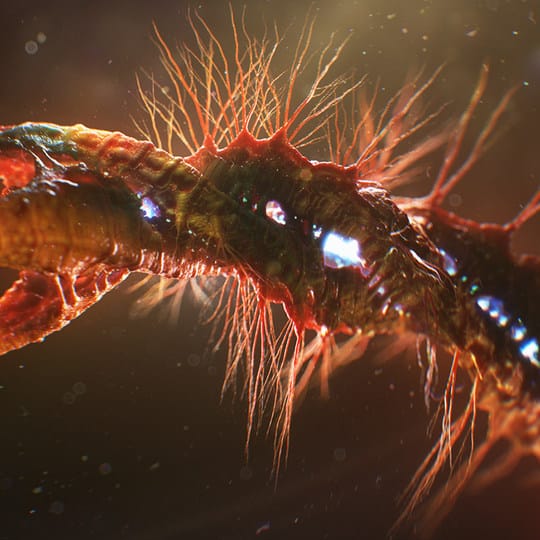Medical imaging clashes with sci-fi and fantasy in Alexey Kashpersky’s weird and wonderful close-ups.
Ebola and HIV may wreak destruction in the real world, but in Alexey Kashpersky’s hands they become something remarkable, beautiful even. Nightmares for the normal person, his Technicolor subjects float seemingly on the edge of a dream, turning what could be a simple medical illustration into a lesson you get lost in. He has a gift and it’s one he started developing at a very young age.
As a child growing up in Ukraine he was fascinated with the natural world, examining everything from microscopic single-celled organisms, to insects and lizards. His mother, a teacher, presented the young biologist with anatomy and biology books, which he devoured mercilessly.
At the same time, Kashpersky nurtured his considerable talents with a master’s degree which covered visual, decorative and applied arts. But he was always drawn back to the natural world. “One of my favorite subjects from all six years of study was plastic anatomy,” he says. “We learned about muscles, bones, and even visited dissecting rooms. Artists can’t simply draw what they see - they have to know what is underneath and understand how it works.
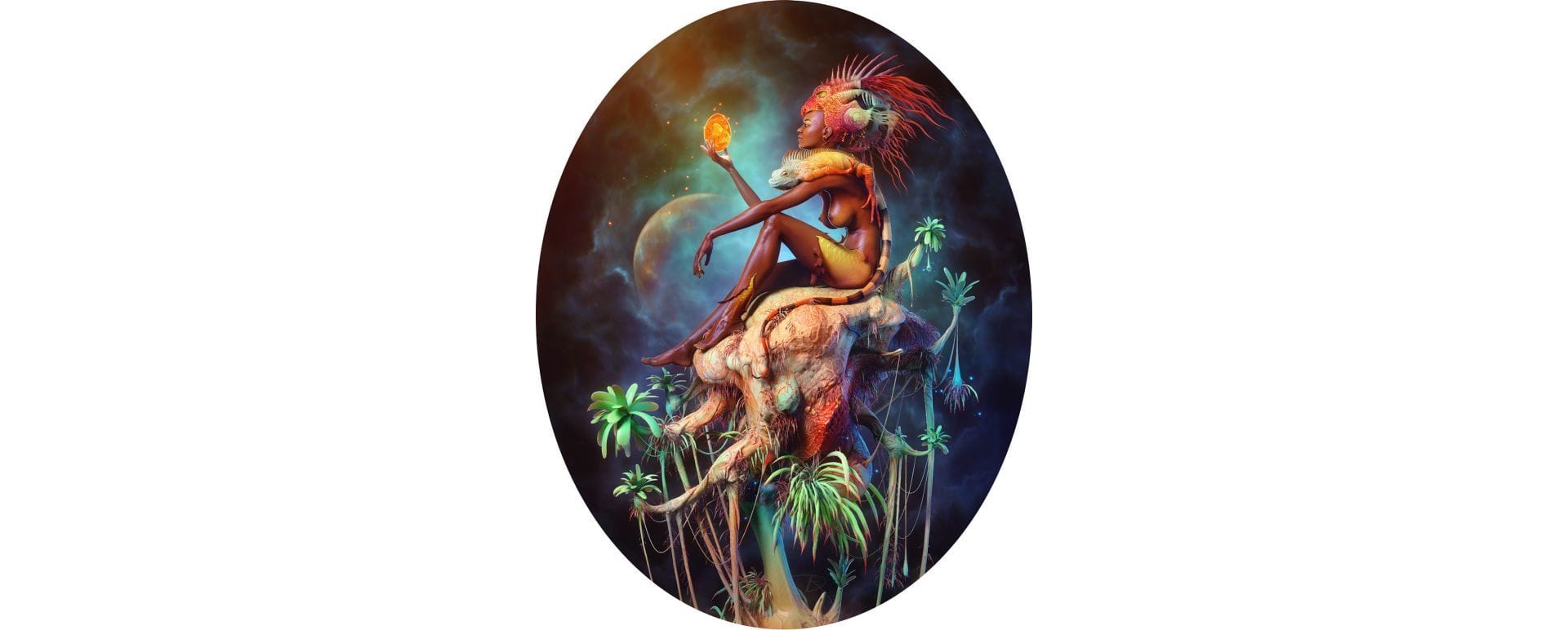
Organic Technology
After graduating, Kashpersky picked up freelance modelling work for 3D printing and TV production companies. He stuck to organic, living things, rather than the hard, cold surfaces of cars and spaceships. “I admire people who are able to create sci-fi robots,” he says. “But everyone has their own perspective, and you need to stick to what you do best.”
In his spare time he worked on fantasy images, such as Dream, Atlantis Herald, and On the Precipice of the Universe. Each combines an encyclopedic knowledge of anatomy and pose with a rich imagination well-versed in the dreamy fantasy images of pulp paperbacks. Kashpersky even cites Boris Vallejo and Julie Bell - the fantasy art community’s equivalents to Kim and Kanye - as influences.
It was a sci-fi image that actually launched Kashpersky’s career as a medical illustrator. In 2012, his wife suggested he enter a spaceship-themed competition run by publisher Celistic. At first Kashpersky dismissed the idea, thinking that it would involve the angular metal structures he’d tried to avoid. But his wife convinced him otherwise. “What’s the problem?” she said. “Make it live!”
Golconda Uranium, the artwork Kashpersky created, won the competition. Aside from its aerodynamic silhouette, this is not a spaceship in any traditional sense; it’s a cluster of tendrils and tentacles and nerves. It’s bizarre and frightening, but beautiful and graceful, like a killer creature you’d find wafting in the deepest regions of the Pacific Ocean, or a microscopic virus wreaking havoc on an immune system.
Kashperksy’s bold, psychedelic vision created a stir on the internet, too. It was picked up by Brandon Pletsch, director of medical animation company Radius Digital Science, who invited Kashpersky to work with him in the USA. In the meantime Kashpersky won another contest, this time with a rendition of the HIV virus. “Winning confirmed that pursuing medical illustration was the right thing for me to do,” he says.
Kashpersky has been plunged into this world, broadening his knowledge of anatomy and virology. “My co-workers are licensed medical illustrators with many years of experience,” he says. “I’ve learned so much about small details of our nature.”
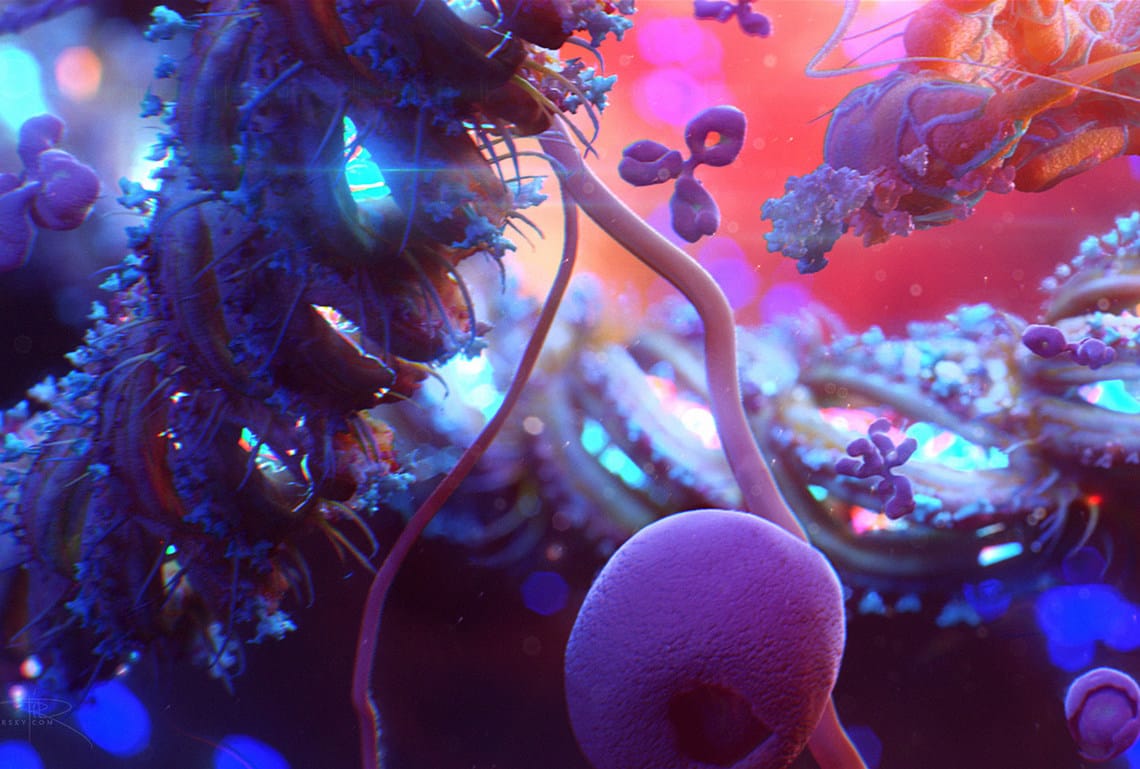
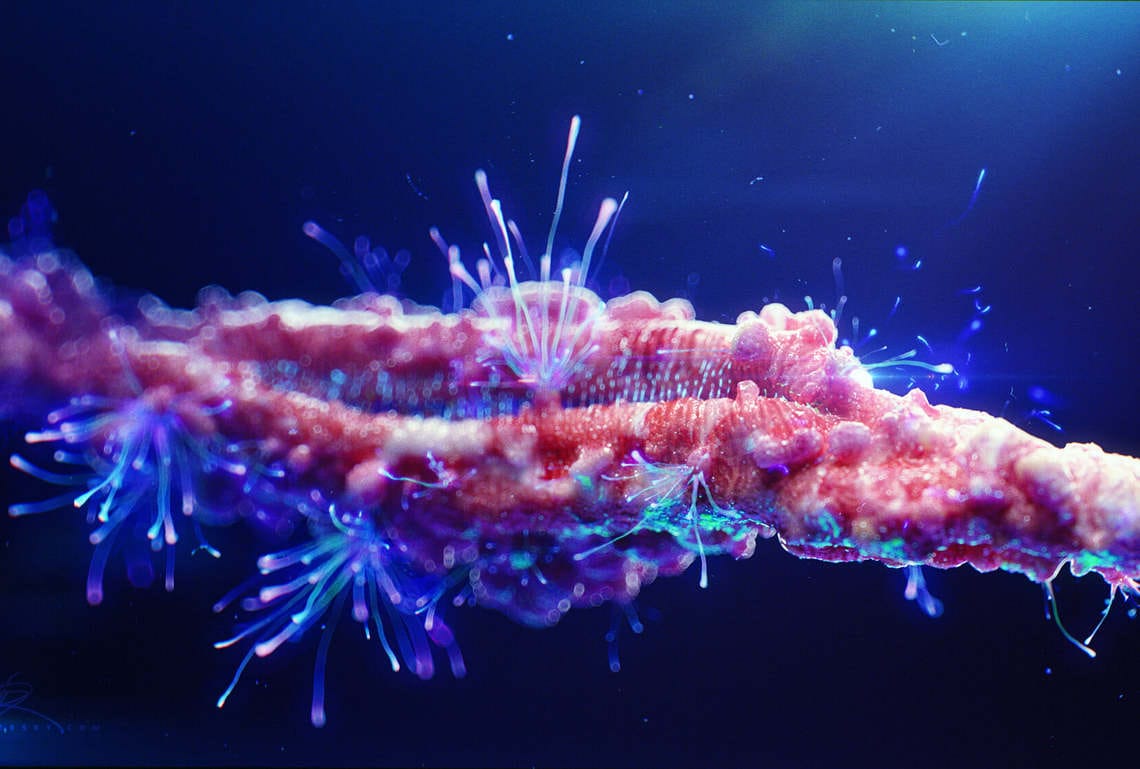
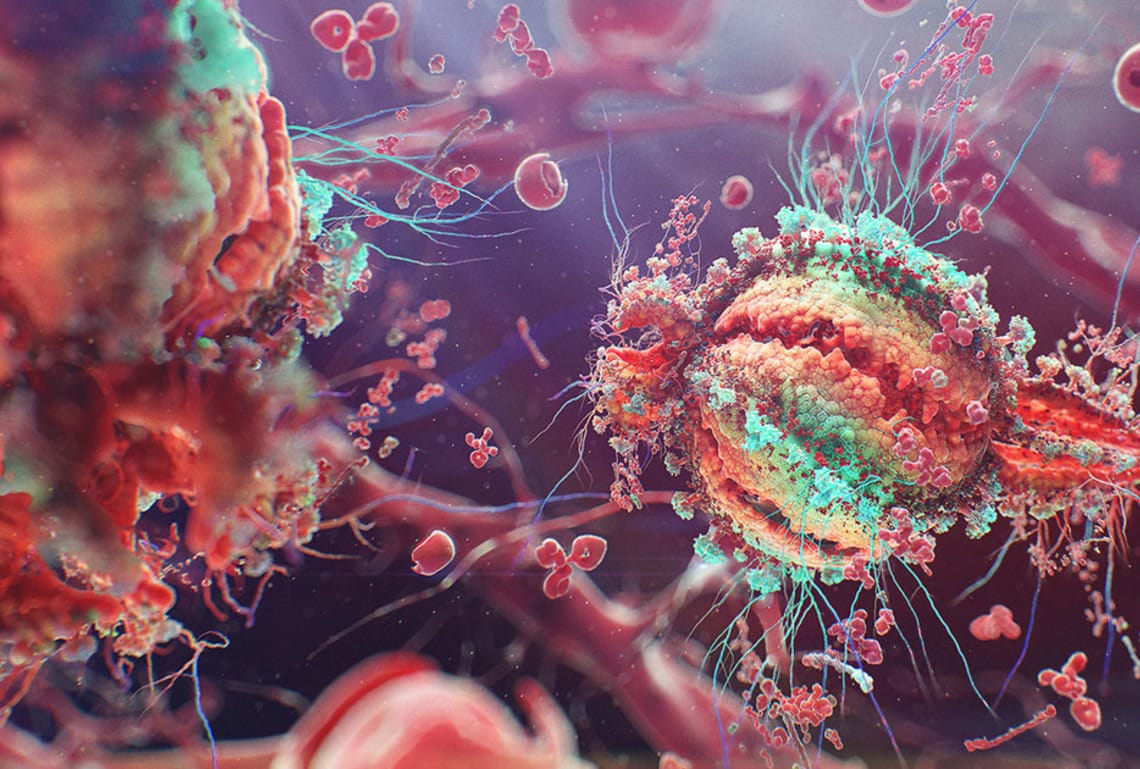
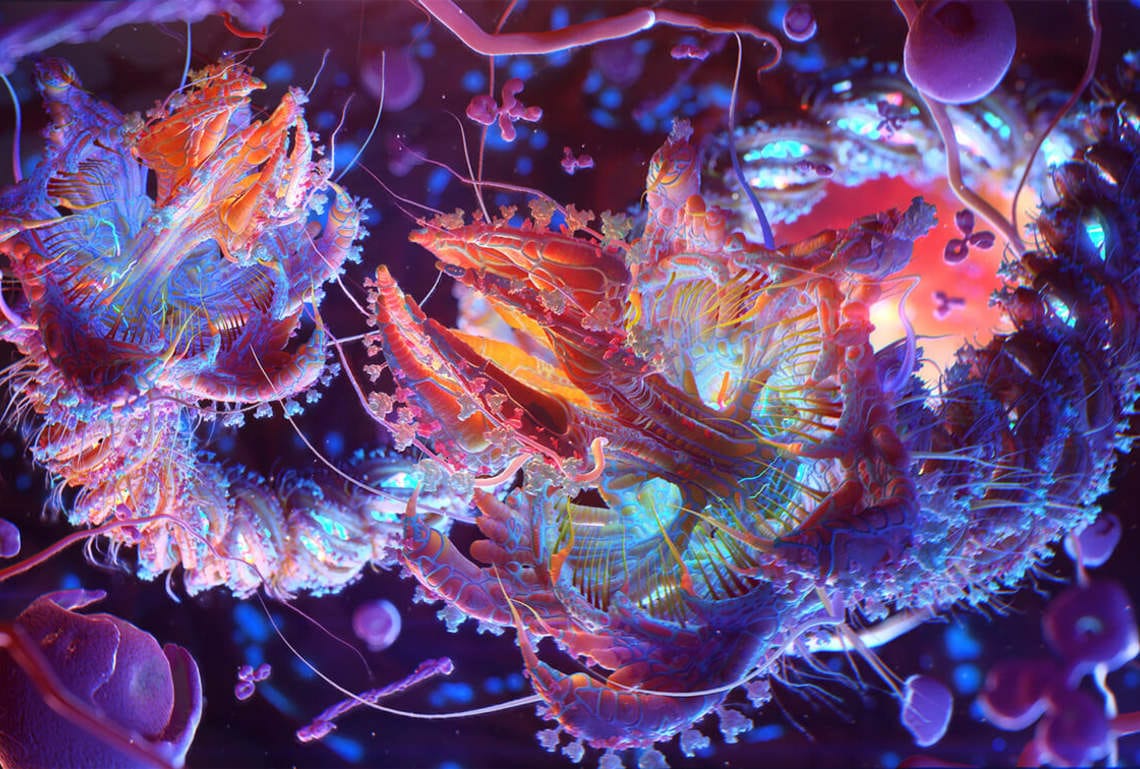
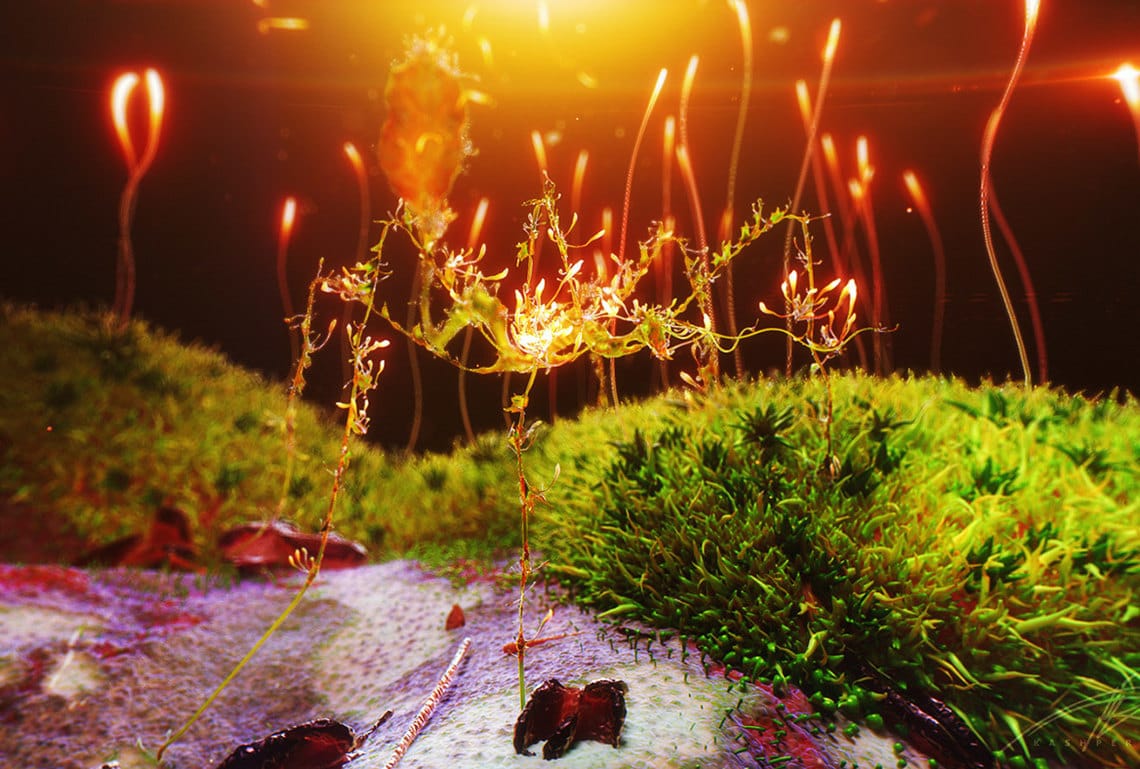
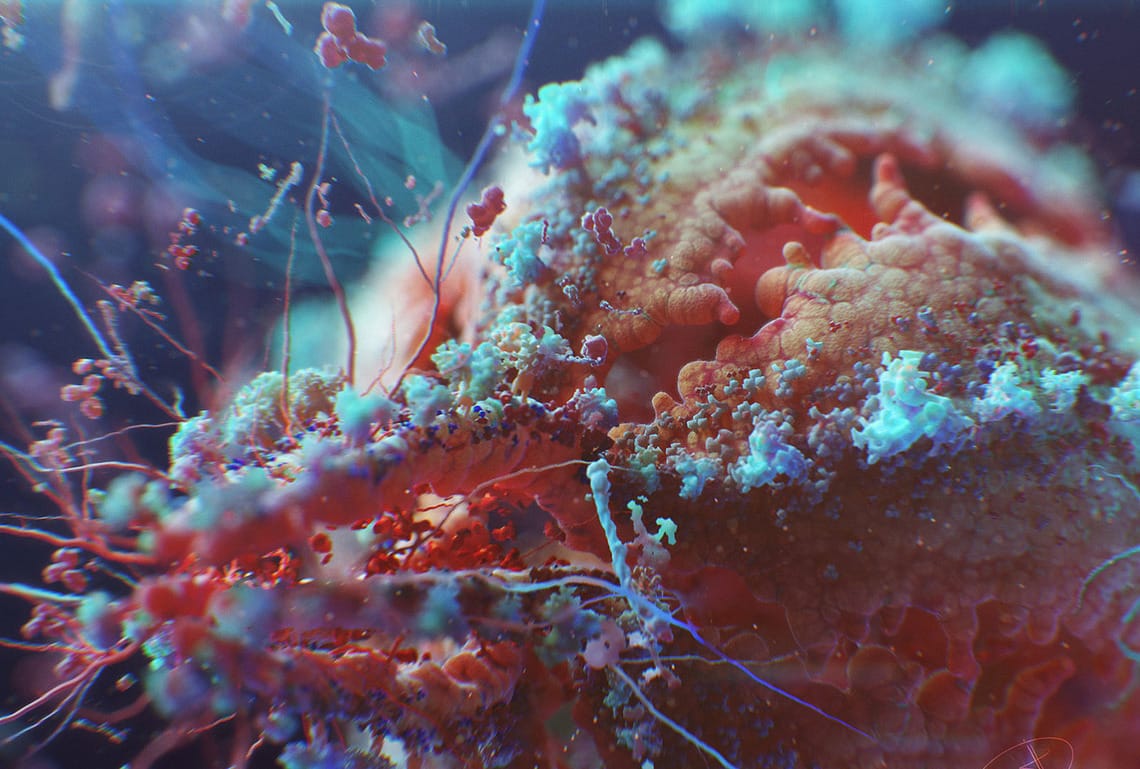
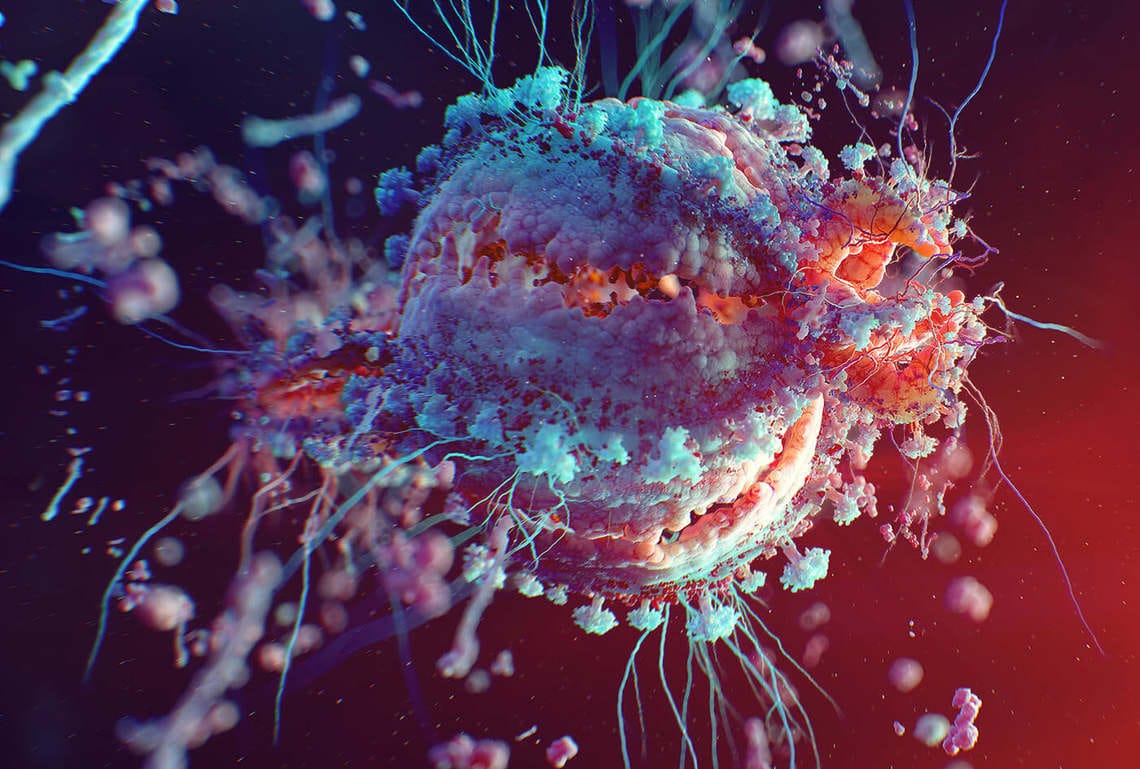
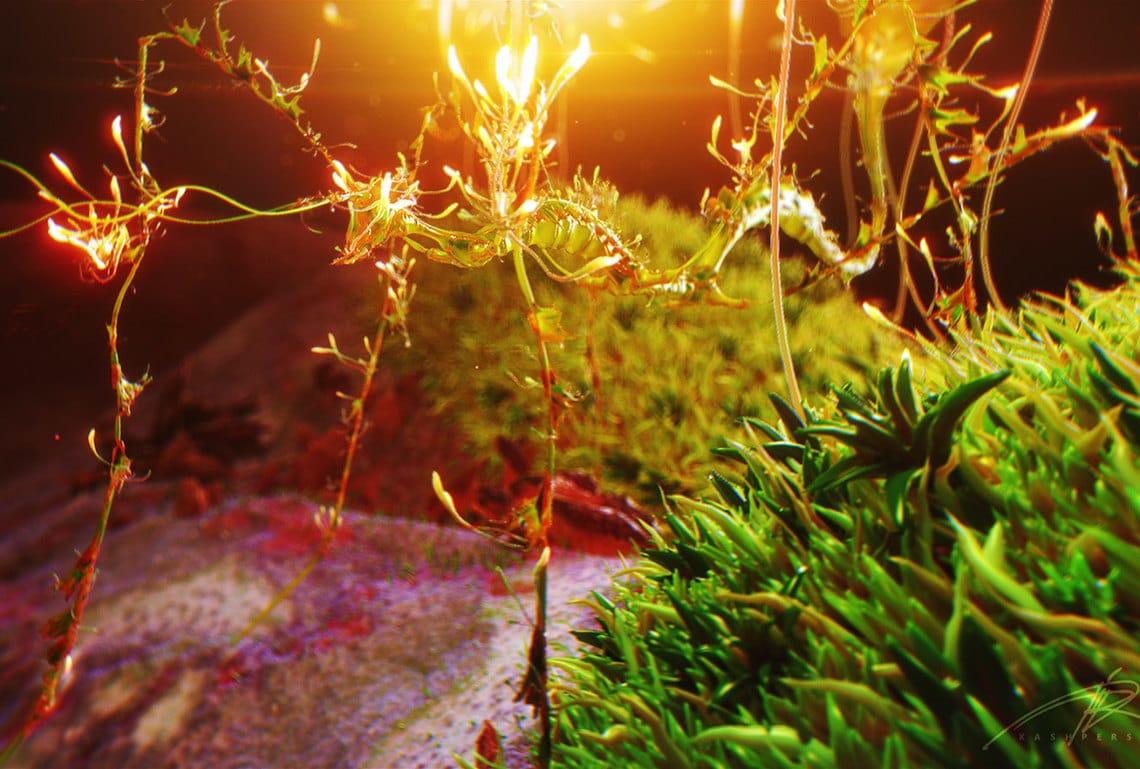
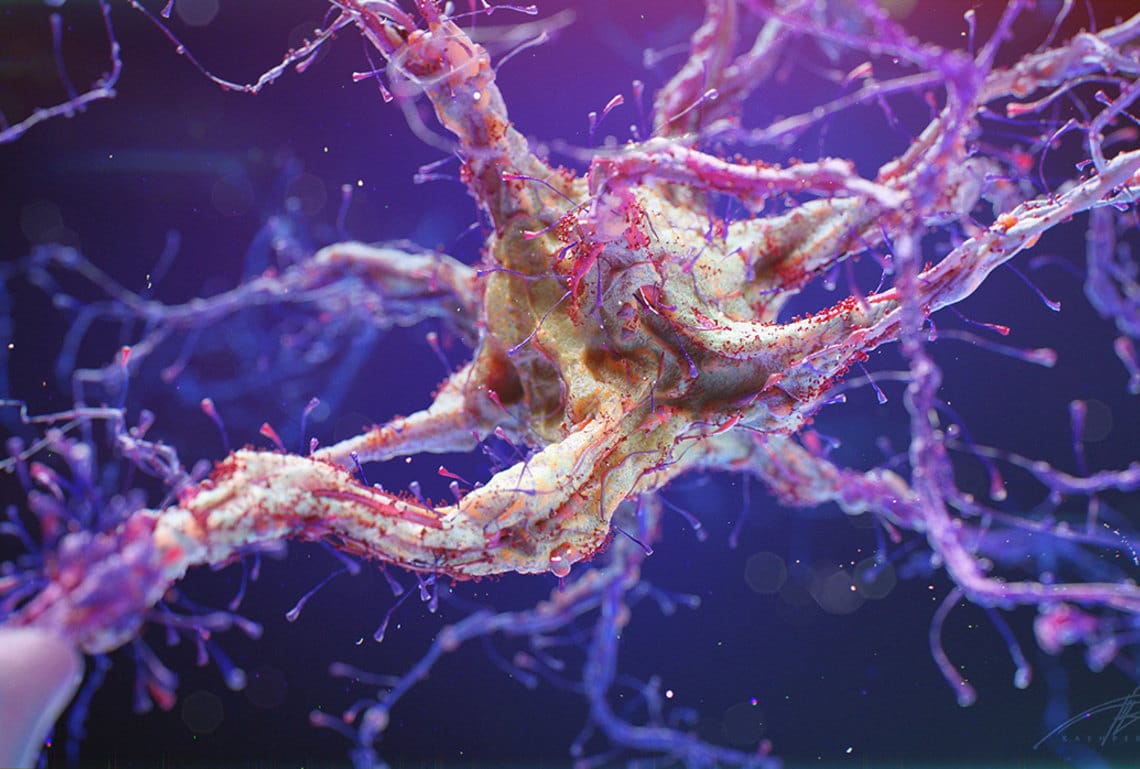
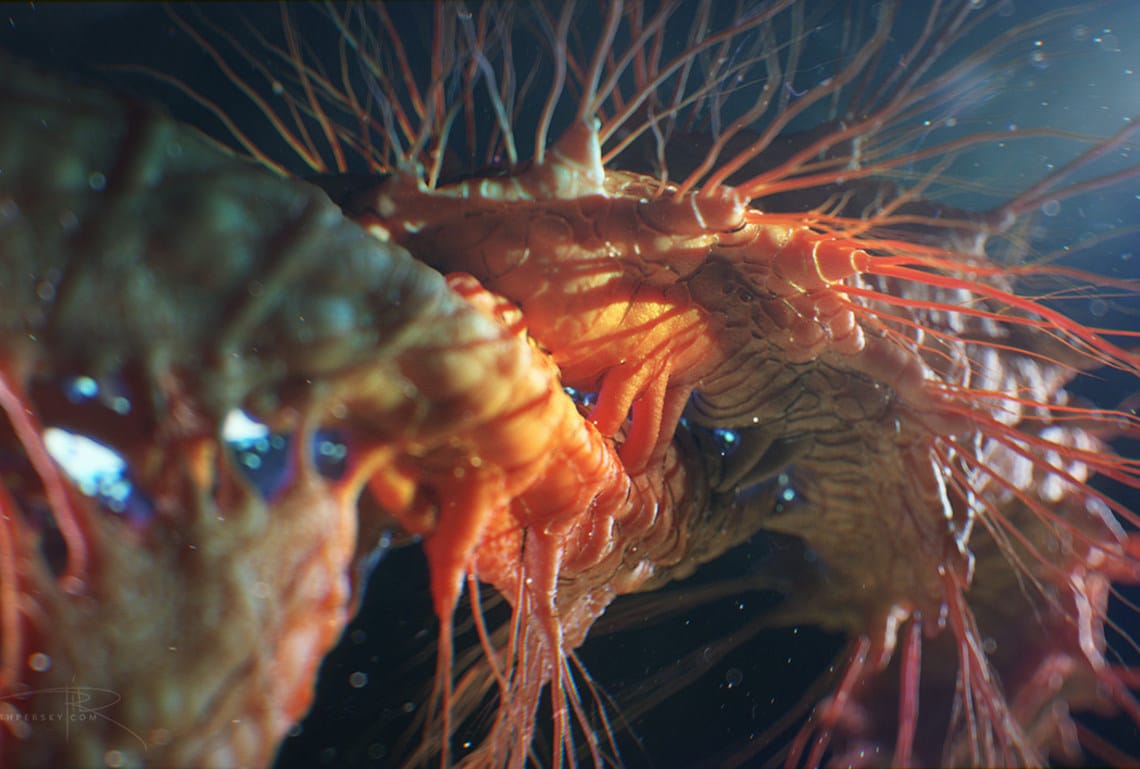


Design DNA
Kashpersky’s approach to his art begins with Internet research and advice from his colleagues, before sketching out ideas with pencil and paper. As he’s surrounded by people with intricate knowledge of the tiniest constituents of biology, a true-to-life approach is essential, but he still has room to exercise some well-judged artistic license. “It usually depends on the task and ‘zoom level,’” he explains. “You have more freedom as you dive deeper, because we have less knowledge of the subject.”
With a strong idea of what he wants to create in his head, Kasphersky fires up ZBrush to flesh out the model and add finer details. Then it’s imported to 3ds Max, and rendered in V-Ray. Lighting plays a key part in his models’ realism, and for this he relies on V-Ray’s subsurface scattering (SSS) shader.
“I tried it once and I’ve never looked back! With enough practice, getting the result you want just feels intuitive. And it saves so much time.”
Alexey Kashpersky, CG Artist
In fact, Kashpersky has come to love V-Ray’s subsurface scattering so much that he doesn’t use textures any more. His most recent viral artwork, Leptospira Bacteria, simply features material and light settings—and apparently viewers have assumed that it’s a real microscopic photograph.
In his spare time, Kashpersky has returned to fantasy. His latest piece, Reptile Queen, juxtaposes realistic human and reptilian models (the latter based on his pet iguana, Tamerlan) with his trademark Technicolor roots and tendrils. “I almost forgot how awesome it is to create fantasy illustrations,” he says. “It's very different from medicine. I feel inspired and energized after publishing Reptile Queen.”
America has opened Kashpersky’s eyes, too. “I’ve been thinking a lot about the big screen after I visited the movie studios in Hollywood,” he says. “I am not sure what it means for me right now, or how I am going to achieve it. But I am sure it will grow into something bigger.” For now Kashphersky’s kaleidoscopic viruses lie dormant, but one day they might infect a curious director’s mind–and make sci-fi cinema a lot more beautiful.

